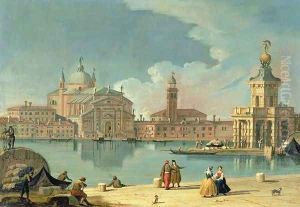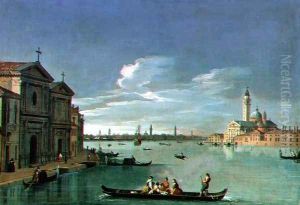(circle of) Richter, Johan Anton Paintings
Johann Anton Richter, often associated with the circle around him, was a notable figure in the European art scene during the late 17th and early 18th centuries. Born in 1665, Richter's contributions spanned across several decades, marking him as an influential artist of his time. His work primarily focused on architectural paintings, capturing the grandeur and intricacy of European architecture in his detailed and vivid portrayals. Despite the scarcity of detailed personal records, Richter's artistic legacy is well recognized among art historians and enthusiasts alike.
Richter's education and early career are shrouded in some mystery, which is not uncommon for artists of his era. However, it is known that he was deeply influenced by the architectural marvels of his time, and possibly trained under masters who specialized in vedute, or detailed architectural landscapes. His circle, comprising students and contemporaries, helped propagate a style that was both accurate in its architectural representation and captivating in its artistic expression.
Throughout his career, Richter's work was celebrated for its precision and beauty. His paintings often featured iconic buildings and public spaces of Europe, rendered with a meticulous attention to detail that was both technically impressive and aesthetically pleasing. These works not only served as artistic achievements but also as historical documents, capturing the architectural trends and urban landscapes of his time.
Richter's influence extended beyond his lifetime, with his death in 1745 marking the end of an era but not the end of his impact. His approach to architectural painting influenced subsequent generations of artists, and his works continue to be studied and admired for their historical significance and artistic merit. Johann Anton Richter remains a respected figure in the history of art, celebrated for his ability to merge technical accuracy with artistic beauty in his portrayals of European architecture.

